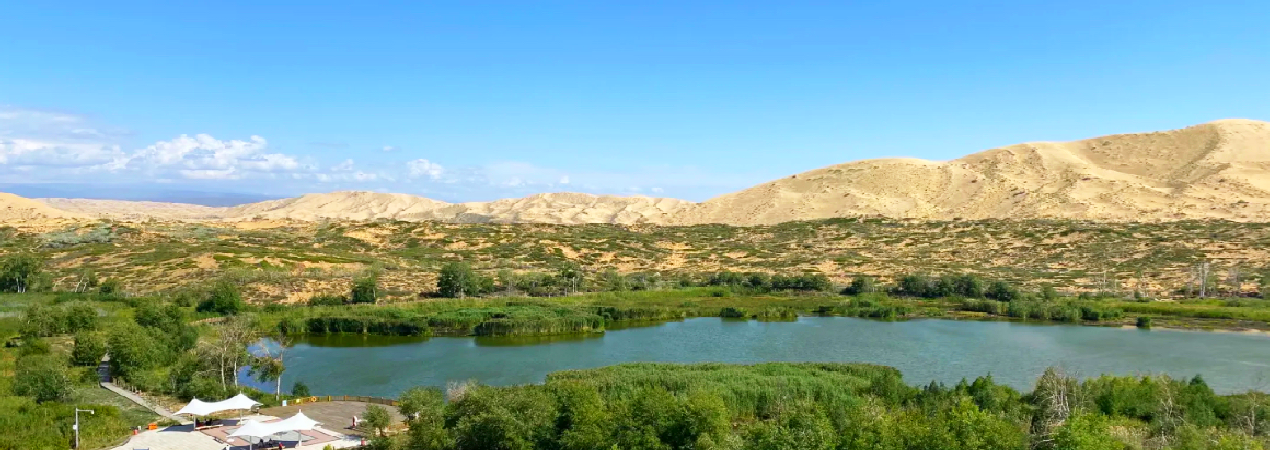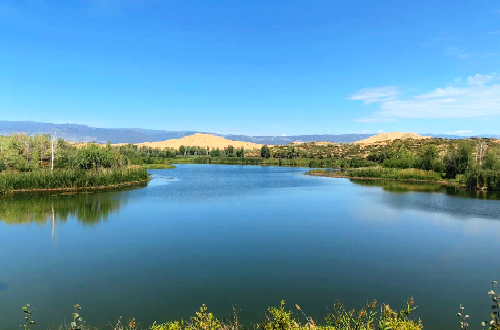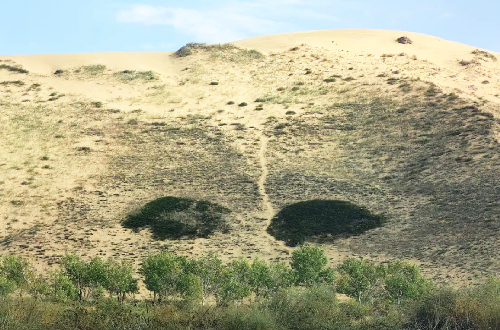Altay Baisha Lake

Altay Baisha Lake, located in Habahe County, Altay Prefecture, Xinjiang Uygur Autonomous Region, is a small desert lake surrounded by sand dunes. It is famous for its unique sand hills, lakes and forest landscapes.
- Chinese name: 白沙湖景区 Bái Shā Hú Jǐng Qū
- Suggested time: 2-3 hours
- Ticket: The ticket price is 78 yuan per person, including the price of the scenic area ticket and the sightseeing vehicles in the scenic area.
- Open hours: 9:30 - 19:30. However, the opening hours may be adjusted during some special holidays, so it is advisable to check in advance.
- The best time to visit: The best times to visit are summer (for blooming lotuses) and autumn (when lakeside trees turn golden and red), while early spring and winter are not recommended due to frozen lakes.
- Address: Baisha Lake Scenic Area, Z840, Habahe County, Altay Region, Xinjiang Uygur Autonomous Region, China.
- How to get there: It is recommended to reach the scenic area by self-driving.
Highlights of Baisha Lake
Baisha Lake
 Baisha Lake
Baisha LakeDifferent from the Baisha Lake in the Pamir Plateau, Baisha Lake in Altay is a pristine lake surrounded by deserts. It has no water inlet or outlet, but the water level does not increase or decrease with the change of seasons, which is called a wonder. The lakeside is full of lush vegetation, and there are tall and dense poplars and birch mixed forests, which create a very unique scenery. Baisha Lake is surrounded by rich animal and plant resources and is a natural ecological protection area. When traditional festivals arrive, the local Kazakh residents will set up yurts on the grass by the lake, which is very lively. Tourists have the opportunity to experience the traditional customs and lifestyle of the Kazakh people.
Mingsha Mountain (Singing Sand Mountain)
Adjacent to Baisha Lake, Mingsha Mountain has a relative height of about 25 meters. It is composed of six sand ridges, stretching about 2 kilometers in length and 100-200 meters in width. In summer, Mingsha Mountain experiences high temperatures, with noon temperatures reaching around 40-60 degrees Celsius.
The main recreational activities on Mingsha Mountain are sand climbing and sand sliding. You can choose to climb the mountain via the windward slope or the sand ridge line—both sections have gentle slopes, making climbing less strenuous. Lying quietly on the mountaintop, you can enjoy the scenery of farms in Markakuli County, East Kazakhstan Prefecture, Kazakhstan, or listen to the singing sound of sand grains being blown by the wind. When sand sliding, you can glide down the dune alone without any tools.
Eye Mountain
 Eye Mountain
Eye MountainEye Mountain is located on a sandy hill. There are several drought-resistant and cold-resistant creeping pines on the mountain, twisting and growing towards the ground, like a pair of eyes.
Educational Value
The birch forests, reeds and other plants growing on the lakeshore have evolved physiological characteristics of salt-alkali resistance and drought resistance (such as the deep root system of birch trees and the aerenchyma of reeds) under the dual stress of arid desert and highly mineralized lake water, which can be used as teaching cases for plant ecological adaptation.
Activities to do at Baisha Lake
Sand painting: Use white, yellow and red sand to make sand paintings in bottles, and the finished products can be taken away as souvenirs.
Scientific investigation: Place thermometers, hygrometers and anemometers on the lakeside and desert areas, record data every hour, draw 24-hour temperature and humidity curves, and analyze the regulatory effect of the "lake effect" on the surrounding temperature.
Drop us a line and we'll connect you with the top China expert in no time!